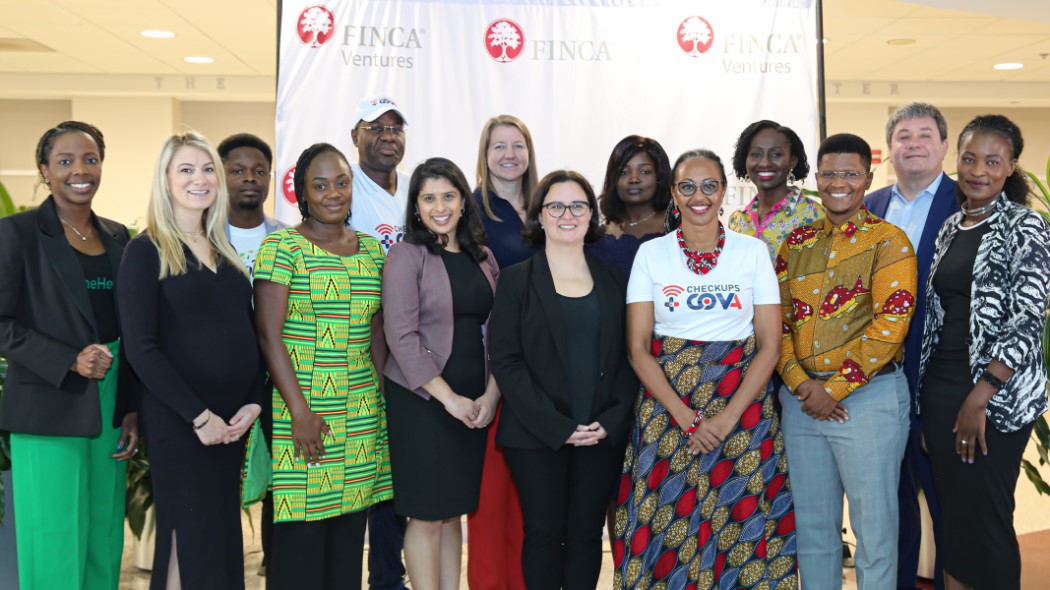Trend-spotting is one of the key attributes of impact investors, and LeapFrog Investments spotted a big one: rising demand from emerging middle-class families for insurance against risks that threaten to plunge them back into poverty.
LeapFrog Investments is a private equity investor in companies providing financial services for individuals earning between $1.25 and $10 a day. As these consumers rise into the middle class in the coming decade, such companies have an opportunity for dramatic growth.
That thesis drove deals such as LeapFrog’s investment of $5.5 million in Express Life in Ghana. Leapfrog founder and CEO Andrew Kuper saw an opportunity to help extend insurance to Ghana’s greatly underserved population, where only two percent of the country’s 25 million citizens had access to insurance products.
[blockquote author=”Andrew Kuper, founder and CEO, LeapFrog Investments” pull=”pullleft”]It’s a shift in mindset–seeing low-income individuals as consumers, not recipients of charitable aid.[/blockquote]
LeapFrog’s investment helped Express Life expand its reach from 7,000 policyholders in 2012 to over 400,000. Express Life has also expanded the types of policies it offers to include coverage for catastrophic events and illnesses, hospital stays and funeral costs for less than $1 a month. LeapFrog’s investors got a nice multiple on the fund’s original commitment to Express Life in December 2013, when Prudential PLC paid “in the low double-digit millions” for LeapFrog’s share of Express Life, according to the Financial Times.
In October, LeapFrog announced its second exit, with the sales of its minority stake in Apollo Investments Limited, a leading East African insurance group, to Swiss Re. LeapFrog’s investment helped the company scale their health insurance offerings and launch a number of products for underserved clients, including last needs and hospital cash insurance.
LeapFrog reported consistent growth across its whole portfolio in 2013, including 40.6 percent revenue growth and a 39 percent profitability increase.
Such results caused global insurance players to take note and propelled LeapFrog’s successful fundraising for its $400 million LeapFrog Financial Inclusion Fund II, which closed in September. Investors included financial services providers American International Group, AXA, Swiss Re, Alliance Trust, MetLife, JP Morgan, Prudential Financial, Swiss Re and Zurich Insurance Group.
In March 2014, Leapfrog’s second fund made its first investment: a $29 million equity investment into IFMR Capital, which provides financial services for financial institutions catering to the under-served in India.
LeapFrog aims to reach as many as 50 million people with the new fund. That still just a fraction of one billion new global consumers who represent $30 trillion in additional consumption by 2025, according to McKinsey. Demand for affordable insurance is growing in many developing countries, especially among women. Financial services are growing about 20 percent a year in its target markets such as India, Indonesia and Sri Lanka and parts of sub Saharan Africa including Ghana, Nigeria and Kenya, Leapfrog says.
Lloyds of London estimates that only five percent of people in the developing world have insurance. Swiss Re estimated in a recent report that the global micro-insurance market could be as much as $70 billion. JP Morgan estimates $176 billion in current investment opportunity in base-of-the-pyramid financial services. No longer the poorest of the poor, they may be only one accident, illness or misfortune from slipping back.
LeapFrog’s first fund of $135 million made equity investments of between approximately $5 million and $15 million in eight companies in Africa and Asia offering insurance and other financial products to individuals living on less than $10 per day.LeapFrog invested $12.1 million in AllLife, in South Africa, which has pioneered life insurance policies for customers with HIV who without such policies have difficulty getting mortgages or business loans.
LeapFrog’s first fund was launched at the Clinton Global Initiative, with former President Clinton on hand. Backers included impact investors such as Omidyar Network, Soros Economic Development Fund, Accion and Calvert Foundation as well as JP Morgan, TIAA-CREF and several development finance agencies.
LeapFrog helps steer insurance providers toward the “next billion” consumers, providing an example of how an impact investor can help reshape a marketplace around greater inclusiveness. “It’s a shift in mindset–seeing low-income individuals as consumers, not recipients of charitable aid,” Kuper told the Financial Times.
LeapFrog estimates its portfolio of companies serve nearly 25 million people across Africa, Asia and Latin America – 19.5 million whom are low-income.
“There’s a vast emerging consumer group below the existing middle class that is going to constitute a high proportion of the world’s purchasing power, but as yet is massively untapped,” Kuper says. “This creates a blue sky opportunity for business to be a positive enabler of change in a very real sense.”
IMPACTS
Financial
LeapFrog has successfully exited two investments, selling its stake in Express Life to Prudential PLC and its stake in Apollo to Swiss Re.
Social
LeapFrog says its portfolio companies reach 24.8 million people, more than 19.5 million of whom are low-income emerging consumers in Africa and Asia.
One of a series of impact profiles produced in conjunction with the Case Foundation’s new publication, “A Short Guide to Impact Investing.”
(note: This article as been updated from an earlier version published April 23, 2014)












